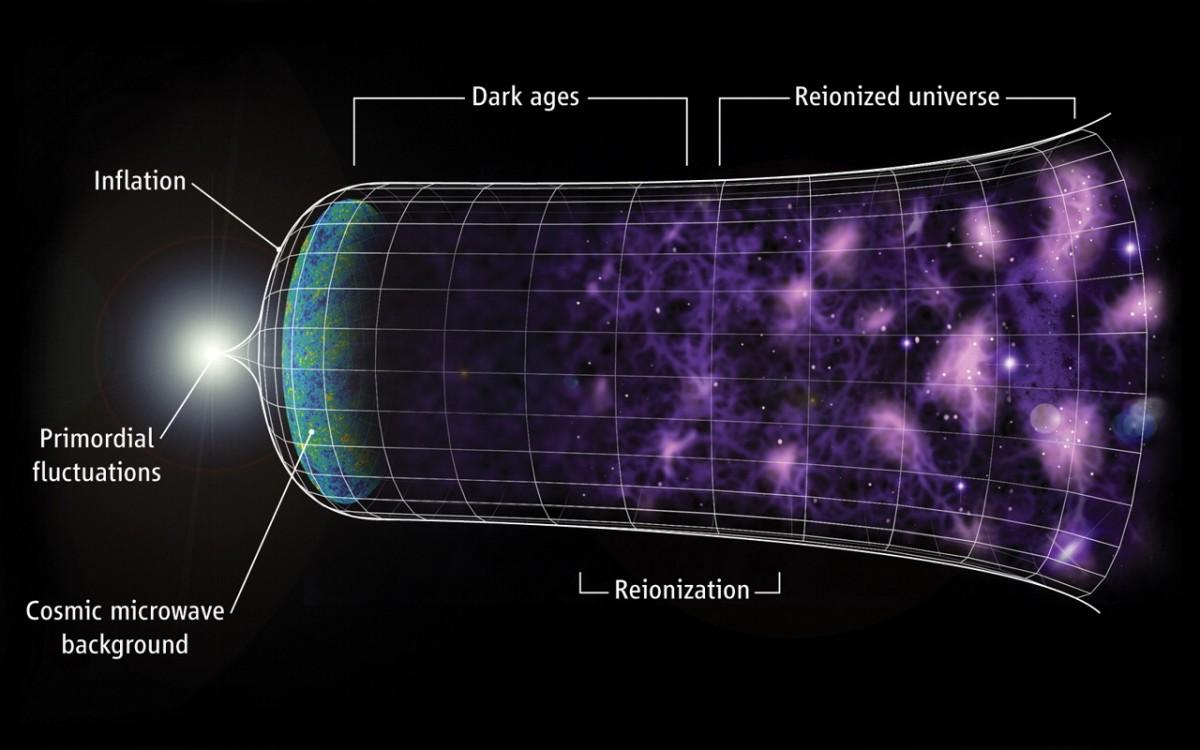 If the universe expands, you can see why distant galaxies are moving away from us. But why don't stars, planets and atoms expand?
If the universe expands, you can see why distant galaxies are moving away from us. But why don't stars, planets and atoms expand?One of the biggest scientific surprises of the 20th century was the discovery of the expansion of the Universe. Distant galaxies run away from us and from each other faster than the closer ones are located, as if the fabric of space itself is stretched. On the largest scales, the density of matter and energy of the Universe has been falling for billions of years, and they continue to do so. And if we glance far enough away, we will see galaxies flying so fast that nothing that we could send to them today will not be able to catch up with them - even the speed of light will not suffice. But is this a paradox? This is what the reader asks:
If the universe expands faster than the speed of light, why does it not affect our solar system and the distance from the sun to the planets? And why the relative distance between the stars of our galaxy does not increase ... or does it increase?
The reader’s thought is correct, and the solar system, the distances between the planets and the stars do not increase with the expansion of the Universe. So what is expanding in the expanding universe? Let's figure it out.
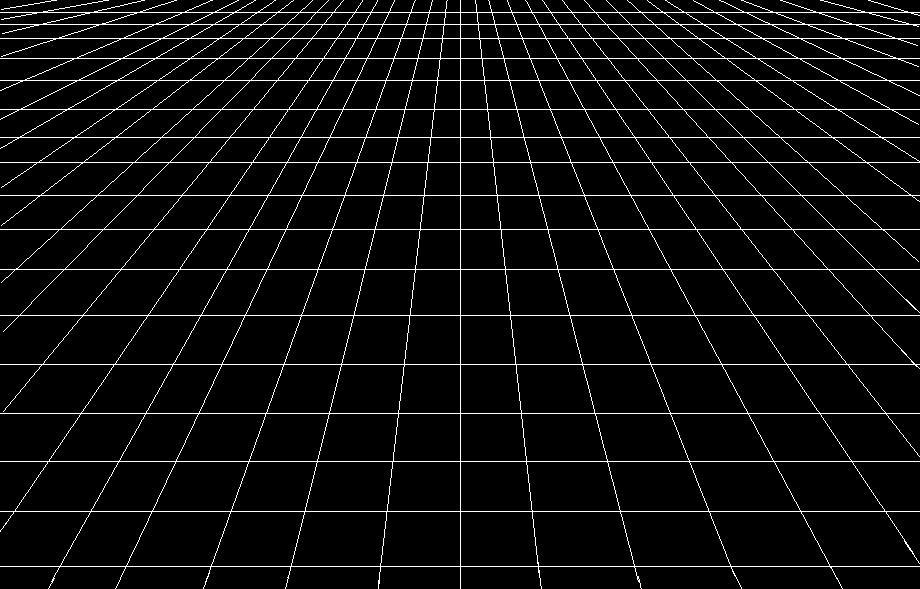 Newton's original view of space as fixed, absolute, and unchanging. It was a scene in which the masses could exist and attract.
Newton's original view of space as fixed, absolute, and unchanging. It was a scene in which the masses could exist and attract.When Newton first thought about the universe, he imagined space as a grid. It was an absolute, fixed entity, filled with masses gravitationally attracted to each other. But when Einstein appeared, he realized that this imaginary grid was not fixed, not absolute, and not like the Newton representation. This grid is similar to fabric, and this fabric is twisted, distorted and changes over time due to the presence of matter and energy. Moreover, matter and energy determine its curvature.
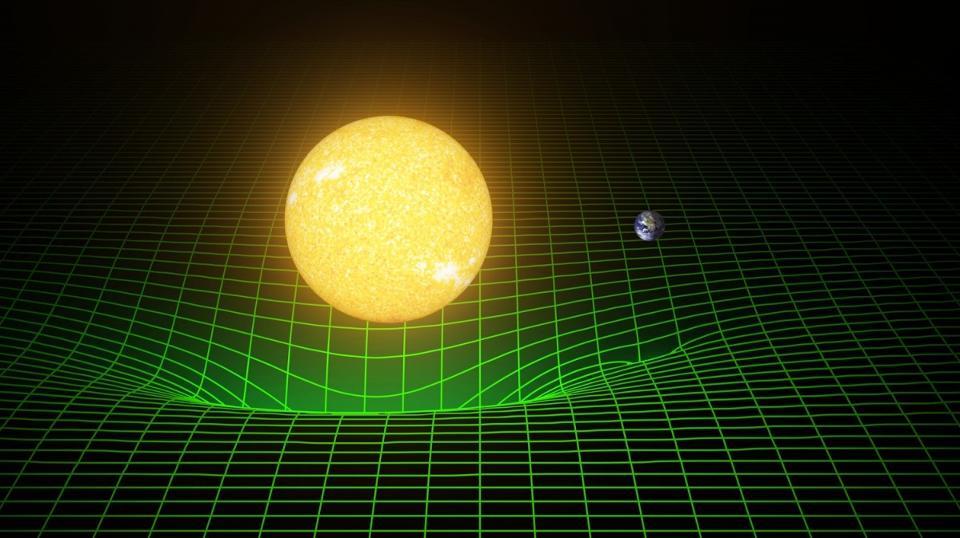 Space-time curvature by gravitational masses according to GR
Space-time curvature by gravitational masses according to GRBut if in your space-time there was only a set of different masses, they would inevitably collapse and form a black hole. Einstein did not like this idea, so he added an “amendment” in the form of a cosmological constant. If this additional term of the equation exists — additional energy permeating empty space — it can repel all these masses and keep the Universe immobile. It will prevent gravitational collapse. By adding it, Einstein allowed the Universe to exist in an almost motionless state forever.
But not everyone was attracted by the idea of a static universe. One of the first decisions was given to a physicist named
Alexander Fridman . He showed that if you do not add this cosmological constant, and fill the Universe with energy - matter, radiation, dust, liquids, etc. - then there are two classes of solutions: one for a shrinking universe, and the other for an expanding one.
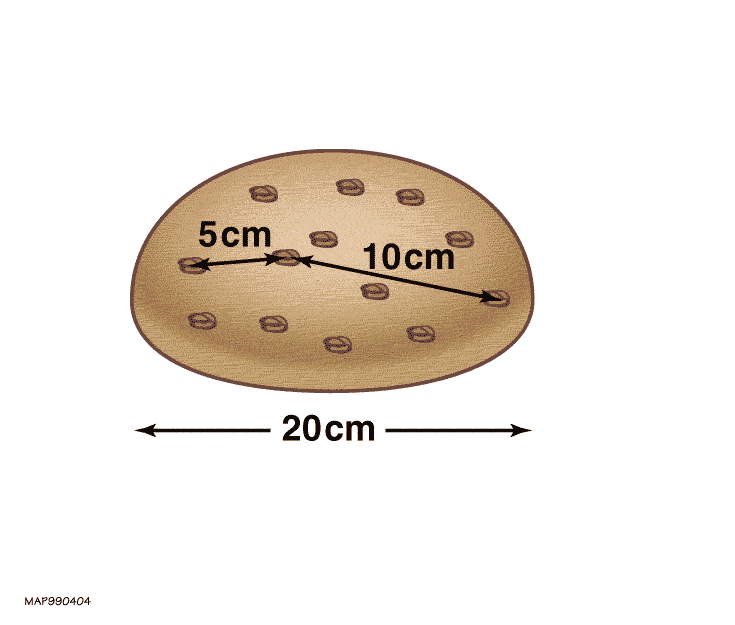 Model of the expansion of the universe in the form of "bread with raisins", where the relative distances increase with the expansion of space (dough)
Model of the expansion of the universe in the form of "bread with raisins", where the relative distances increase with the expansion of space (dough)Mathematics gives you possible solutions, but you need to look at the physical Universe to find out which one describes it. This happened in the 1920s thanks to the work of
Edwin Hubble . Hubble first discovered that it is possible to measure the characteristics of individual stars in other galaxies and determine the distance to them. Combining these measurements with the works of Vesto Slipher, who showed that these objects are shifting the atomic spectrum, he got an amazing result.
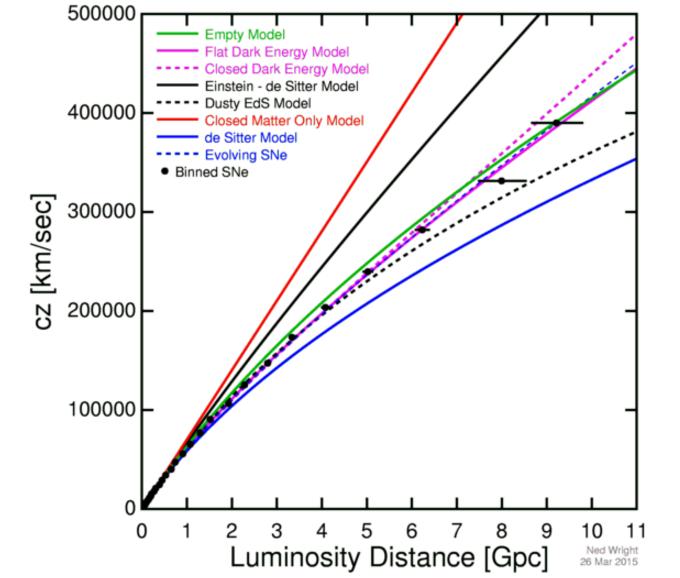 The graph of the apparent expansion rate (y-axis) versus distance (x-axis) corresponds to a universe that has expanded rapidly in the past, but is still expanding today. This is a modern version of Hubble’s work, extended thousands of times larger than the original
The graph of the apparent expansion rate (y-axis) versus distance (x-axis) corresponds to a universe that has expanded rapidly in the past, but is still expanding today. This is a modern version of Hubble’s work, extended thousands of times larger than the originalEither the whole theory of relativity is wrong, we are in the center of the Universe and everything runs symmetrically away from us, or the theory of relativity is correct, Friedman is right, and the farther the galaxy is from us, the faster it will move away from us on average. In one motion, the theory of an expanding universe moved from a simple idea to a leading description of the universe.
The extension works a bit counterintuitively. Everything looks as if the fabric of space stretches over time, and all objects in this space are pulled apart from each other. The further the object is from the other, the more stretching between them, the faster they move away from each other. If we had a universe uniformly filled with matter, then the matter would simply become less dense and each of its parts would eventually drift away from everyone else.
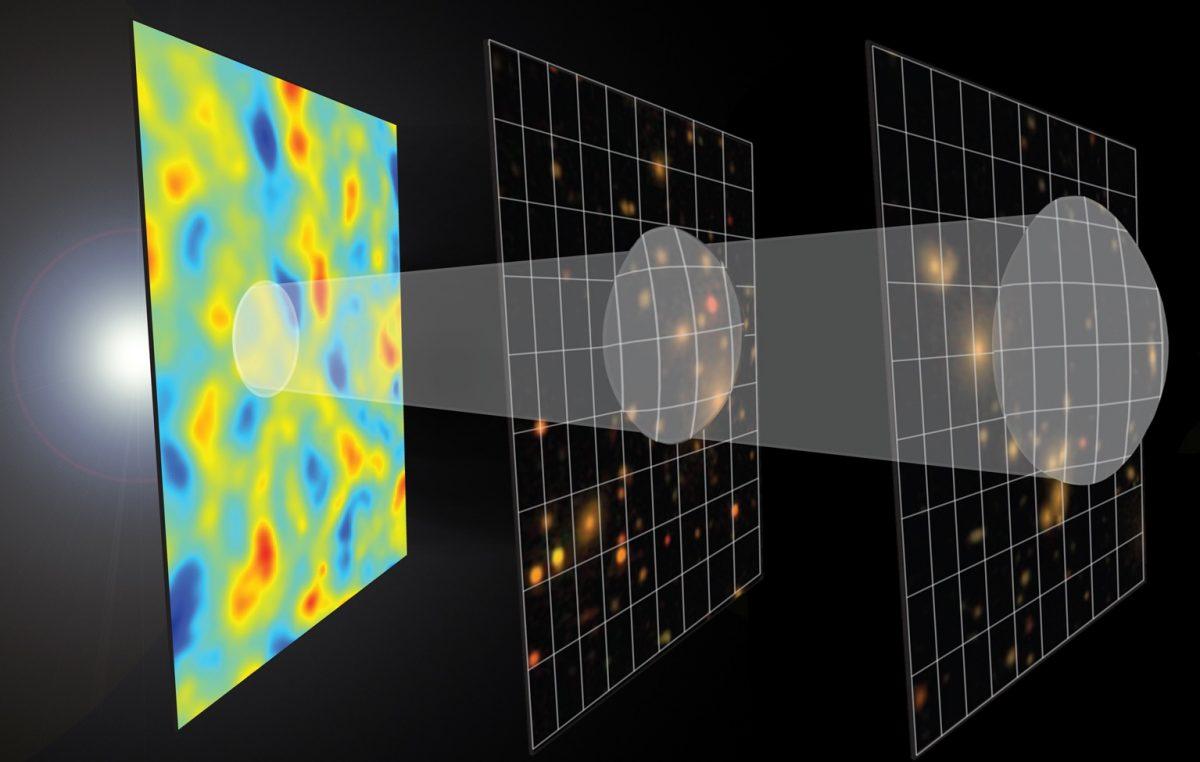 Cold fluctuations (blue) of the CMB are not essentially colder, but simply represent areas in which there is greater gravitational attraction due to the greater density of matter. Hot areas (red) are hot, because the radiation in these areas lives in a smaller gravity well. Over time, denser areas will turn into stars, galaxies and clusters with a higher probability, and less dense regions with a smaller one.
Cold fluctuations (blue) of the CMB are not essentially colder, but simply represent areas in which there is greater gravitational attraction due to the greater density of matter. Hot areas (red) are hot, because the radiation in these areas lives in a smaller gravity well. Over time, denser areas will turn into stars, galaxies and clusters with a higher probability, and less dense regions with a smaller one.But the universe is not perfectly uniform. It has areas of increased density, such as planets, stars, galaxies, clusters of galaxies. There are areas of low density in it, such as huge space
voids where practically no massive objects can be found. The reason for this is the presence of other physical phenomena besides the expansion of the Universe. On a small scale, the size of animals and less, electromagnetism and nuclear forces prevail. On a large scale - planets, solar systems and galaxies - gravitational effects dominate. On the largest scales - sizes comparable to the Universe - the main struggle takes place between the expansion of the Universe and the gravitational pull of all the matter and energy in it.
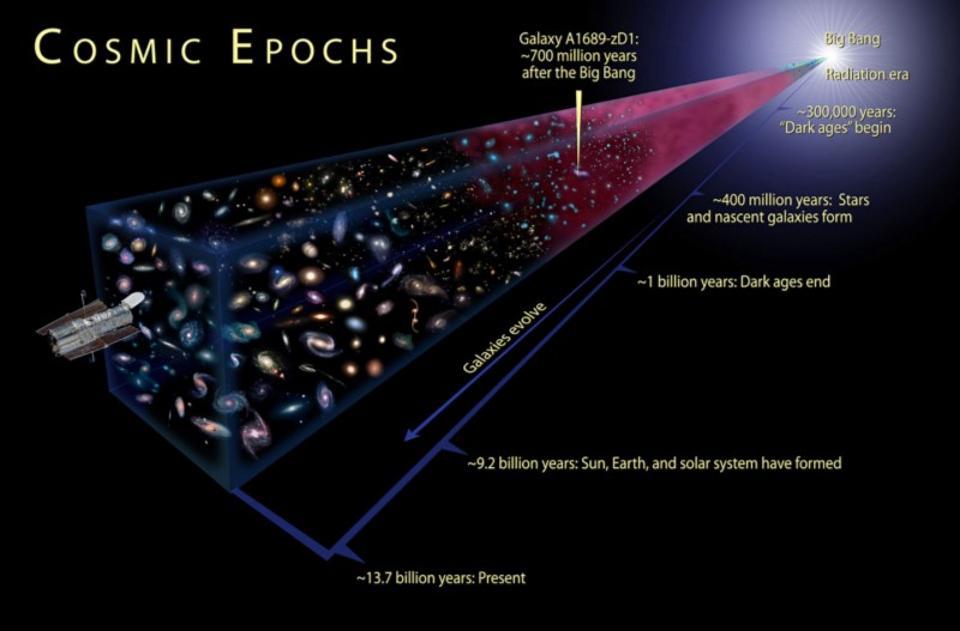 On the largest scale, the universe is expanding, and galaxies are moving away from each other. On small scales, gravity overpowers expansion, which leads to the formation of stars, galaxies and their clusters
On the largest scale, the universe is expanding, and galaxies are moving away from each other. On small scales, gravity overpowers expansion, which leads to the formation of stars, galaxies and their clustersAt the largest scale expansion wins. The most distant galaxies are being removed so quickly that no signals that we could send to them, even at the speed of light, would ever reach them. The superclusters of the Universe — the long, filamentary structures along which galaxies stretching billions of light-years line up — stretch and move apart due to the expansion of the Universe. In a relatively short time they will disappear. And even the cluster of galaxies nearest to the Milky Way, the
cluster of Virgo , which is only 50 million light-years away from us, will not attract us. Despite the gravitational pull, more than a thousand times larger than our own, the expansion of the Universe pulls us apart.
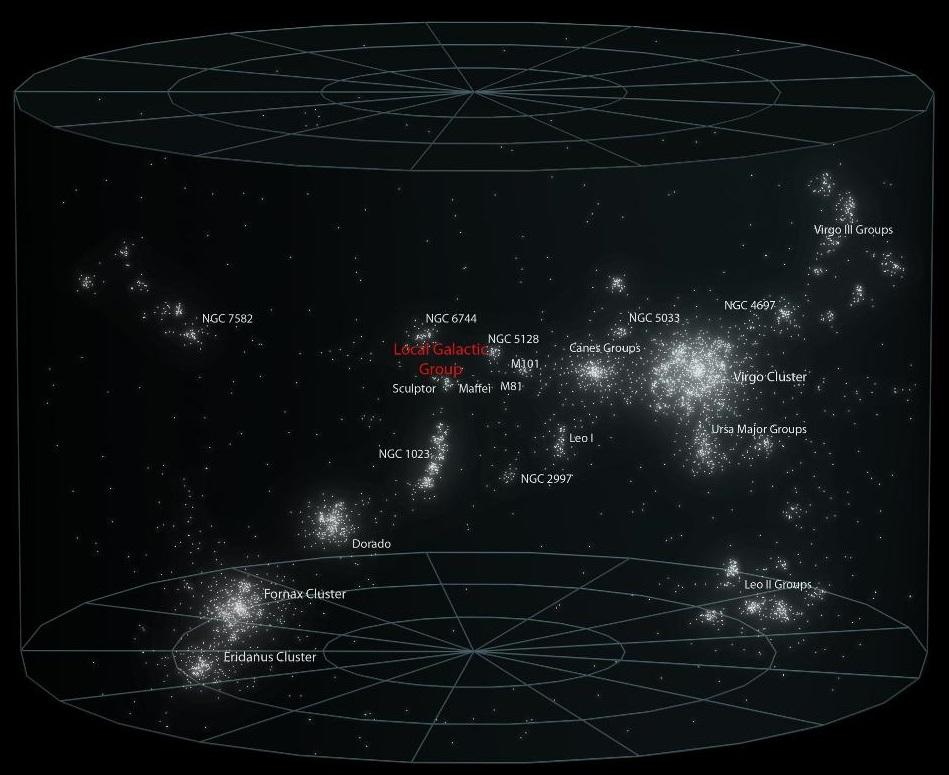 A large set of many thousands of galaxies is our immediate environment within 100,000,000 light years. Virgo Cluster will remain gravitationally bound, but the Milky Way will continue to move away from it over time.
A large set of many thousands of galaxies is our immediate environment within 100,000,000 light years. Virgo Cluster will remain gravitationally bound, but the Milky Way will continue to move away from it over time.But there are smaller scales where the expansion was defeated - at least locally. Virgo Cluster will remain bound gravitationally. The Milky Way and the entire local group of galaxies will remain connected, and eventually merge under the action of gravity. The Earth will continue to orbit around the Sun at the same distance, the Earth will remain the same size, and the atoms that make up everything will not expand. Why? Because the expansion of the Universe works only where other interactions - gravitational, electromagnetic, nuclear - have not overcome it. If any force is able to keep the object intact, even the expansion of the Universe will not be able to change it.
 The orbits of the planets in the TRAPPIST-1 system do not change with the expansion of the Universe due to the binding force of gravity, which overcomes all the consequences of expansion
The orbits of the planets in the TRAPPIST-1 system do not change with the expansion of the Universe due to the binding force of gravity, which overcomes all the consequences of expansionThere is an obvious reason for this, because the expansion is not an interaction, but more speed. The space expands on all scales, but the expansion only affects all objects collectively. Between two points, the space will expand at a certain speed, but if this speed is less than the speed of escape between two objects - if between them the connecting force acts - then the distance between them will not increase. No increase in distance, no effect of expansion. At any time, the expansion is overcome with a margin, so it will never acquire the cumulative effect observed between unrelated objects. As a result, stable, connected objects can survive unchanged in the expanding universe forever.
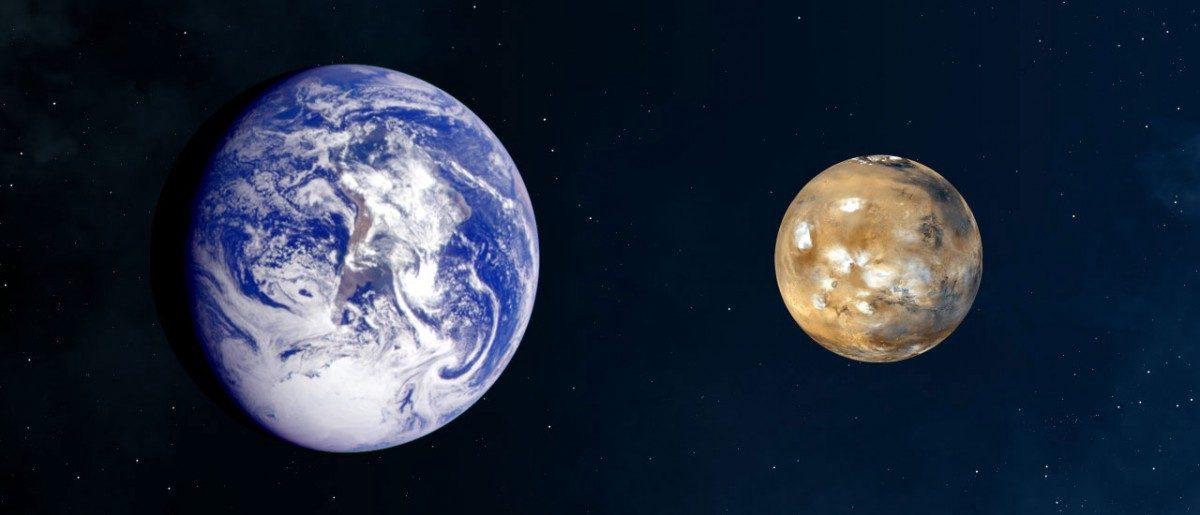 The dimensions of stable objects held together, whether they are connected by gravity, electromagnetism or other force, will not change with the expansion of the Universe. If you manage to overcome the cosmic expansion, you will remain connected forever.
The dimensions of stable objects held together, whether they are connected by gravity, electromagnetism or other force, will not change with the expansion of the Universe. If you manage to overcome the cosmic expansion, you will remain connected forever.As long as the Universe possesses the properties measured by us, this will continue. Dark energy can exist and force distant galaxies to move from us with acceleration, but the effect of expansion at a fixed distance will not change. Only in the
Big Gap version - which is not indicated by evidence - can this conclusion be changed.
The fabric of space can expand everywhere, but it does not have a measurable effect on objects. If a force keeps you connected, the expanding Universe will not affect you. Only on the largest scale, on which all the forces connecting objects are too weak to defeat the Hubble's speed, and this expansion occurs. As the physicist
Richard Price once said: “If your waistline expands, you cannot blame the expansion of the Universe.”
Ethan Siegel - astrophysicist, popularizer of science, blog Starts With A Bang! He wrote the books Beyond The Galaxy , and Treknologiya: Star Trek Science [ Treknology ].